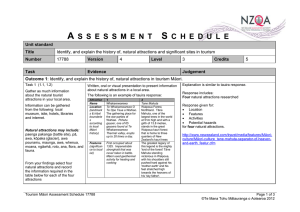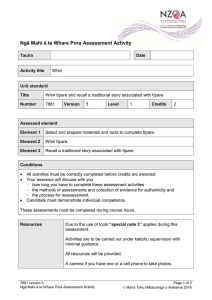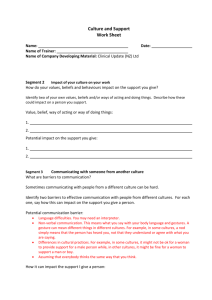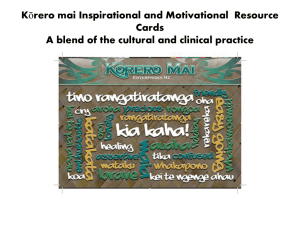Activity (DOC, 934KB)
advertisement
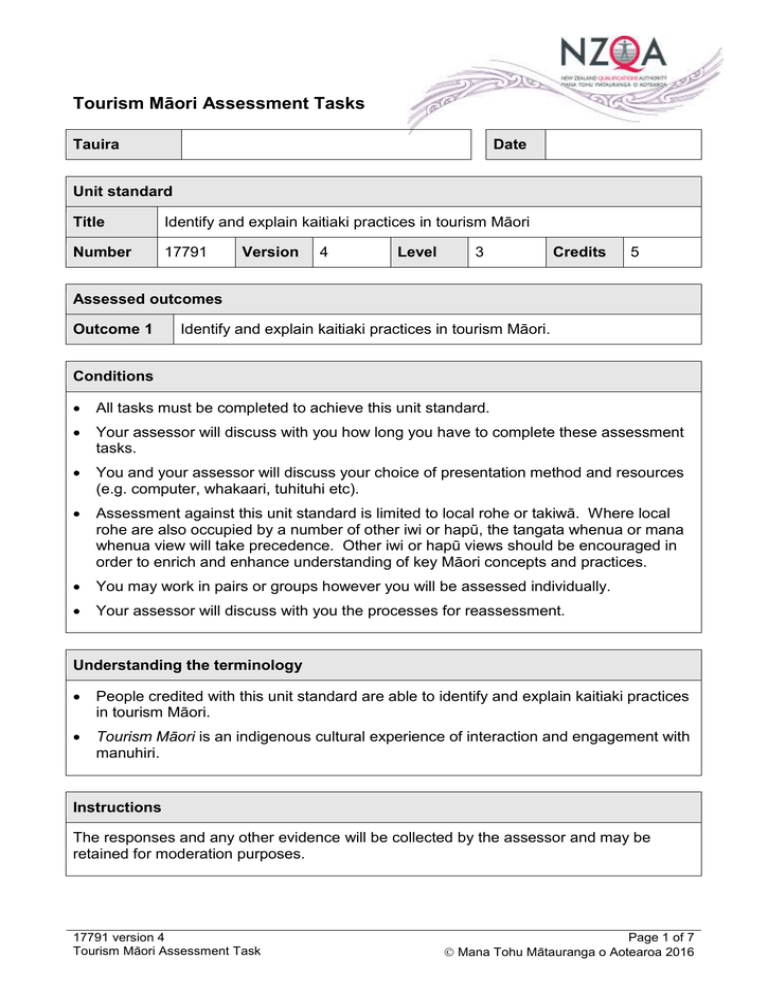
Tourism Māori Assessment Tasks Tauira Date Unit standard Title Identify and explain kaitiaki practices in tourism Māori Number 17791 Version 4 Level 3 Credits 5 Assessed outcomes Outcome 1 Identify and explain kaitiaki practices in tourism Māori. Conditions All tasks must be completed to achieve this unit standard. Your assessor will discuss with you how long you have to complete these assessment tasks. You and your assessor will discuss your choice of presentation method and resources (e.g. computer, whakaari, tuhituhi etc). Assessment against this unit standard is limited to local rohe or takiwā. Where local rohe are also occupied by a number of other iwi or hapū, the tangata whenua or mana whenua view will take precedence. Other iwi or hapū views should be encouraged in order to enrich and enhance understanding of key Māori concepts and practices. You may work in pairs or groups however you will be assessed individually. Your assessor will discuss with you the processes for reassessment. Understanding the terminology People credited with this unit standard are able to identify and explain kaitiaki practices in tourism Māori. Tourism Māori is an indigenous cultural experience of interaction and engagement with manuhiri. Instructions The responses and any other evidence will be collected by the assessor and may be retained for moderation purposes. 17791 version 4 Tourism Māori Assessment Task Page 1 of 7 Mana Tohu Mātauranga o Aotearoa 2016 Tauira Assessment Tasks Task 1a (1.1) Find out what is meant by kaitiaki practices and how they pertain to Ranginui (sky father) and Papatūanuku (earth mother). Record at least four kaitiaki practices below and give a brief explanation (one paragraph) about each one. 1 2 3 4 17791 version 4 Tourism Māori Assessment Task Page 2 of 7 Mana Tohu Mātauranga o Aotearoa 2016 Tauira Task 1b (1.1) From your findings above in Task 1a, explain two different kaitiaki practices and how they are applied in tourism Māori. Kaitiaki Practice 1 Kaitiaki Practice 2 17791 version 4 Tourism Māori Assessment Task Page 3 of 7 Mana Tohu Mātauranga o Aotearoa 2016 Tauira Tāne and Tangaroa (known as kāwai tīpuna or atua) are two of several children ‘born’ to Ranginui and Papatūānuku. They were notably possessed with supernatural powers that have influenced the way in which te ao Māori is structured. This structure provides a model for the way in which Māori people behave. Task 2 (1.2) Research three kāwai tipuna/atua – Tāne, Tangaroa and one other and identify two kaitiaki practices for each, that are appropriate to tourism Māori, that ensure the relationship between people and their environments are protected and kept in a healthy state. When writing up your research, include the domain or realm they are kaitiaki of. Tane 1 kaitiaki practice 2 kaitiaki practice Tangaroa 1 kaitiaki practice 2 kaitiaki practice 17791 version 4 Tourism Māori Assessment Task Page 4 of 7 Mana Tohu Mātauranga o Aotearoa 2016 Tauira One other kāwai tīpuna 1 kaitiaki practice 2 kaitiaki practice Tangata tiaki/kaitiaki who can authorise customary gain or access to natural resources within their rohe are individuals or groups belonging to the tangata whenua (whānau, hapū or iwi), and hold mana whenua and mana moana over that rōhe. Task 3 (1.3) Interview kaumātua, pakeke, or iwi authority from your local rohe and discuss kaitiaki practices and how they relate to three different tourism events. The events may be: Matariki celebrations tramping 17791 version 4 Tourism Māori Assessment Task fishing swimming wahi tapu other activities Page 5 of 7 Mana Tohu Mātauranga o Aotearoa 2016 Tauira Name the three events below and explain the kaitiaki practices the local rohe applied to each event. Event Kaitiaki practice 1 17791 version 4 Tourism Māori Assessment Task Page 6 of 7 Mana Tohu Mātauranga o Aotearoa 2016 Tauira Event Kaitiaki practice 2 3 17791 version 4 Tourism Māori Assessment Task Page 7 of 7 Mana Tohu Mātauranga o Aotearoa 2016
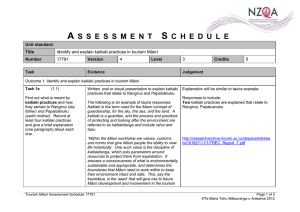
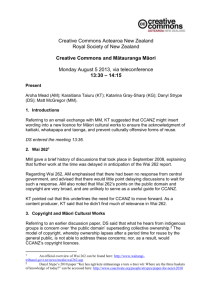
![Kaitiakitanga & Taonga Lesson[1].](http://s2.studylib.net/store/data/005496431_1-77f7f6036b118ccda54d4a6567354b9a-300x300.png)
